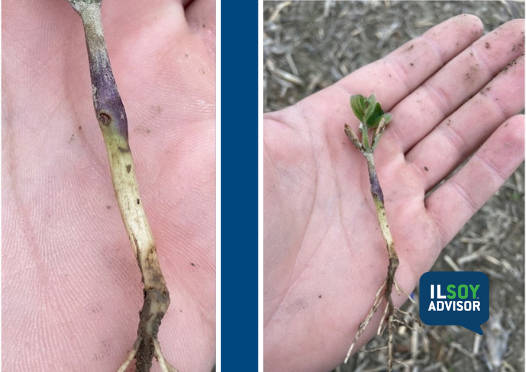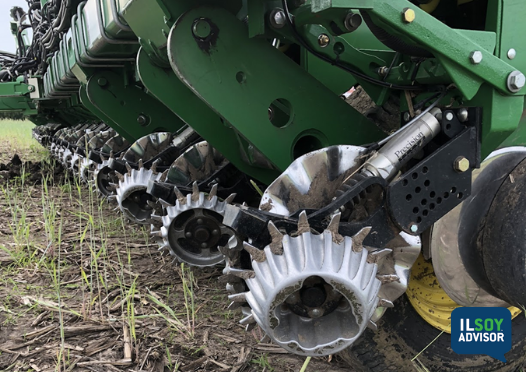ILSOYADVISOR POST
What’s the Right Recipe to Coat Naked Soybeans?
Planting naked seed is increasingly uncommon as seed treatments become the new normal.
Many growers have witnessed the value of and return on investment from an effective seed treatment mix on soybeans. Seed treatments are often thought of as “insurance” for a seed investment. With it growers can plant earlier, and have more uniform plant stands, improved yield potential and fewer replants.
Research has shown that using seed treatments can allow us to reduce our planting populations and save on seed costs. But just because soybeans are treated does not mean they are fully protected. Seed treatment components and rates matter. And, not all seed treatments or biologicals are compatible when used together. Adding rhizobium or micronutrients can just complicate the situation.
What is the right soybean seed treatment recipe and why?
Insecticides
Many seed treatment packages today have insecticides from the neonicotinoid family such as Cruiser®, Gaucho®or Poncho® that are labeled for early season control of aphids, bean leaf beetles, seed corn maggot and many other insects. Insecticide treatments also help control some viral diseases, since some insects could be vectors.
Many question whether an insecticide is needed in a seed treatment. The answer depends on environment, insect pressure and early planting date. Companies claim additional growth and vigor effects provided by certain insecticide components, which are added benefits. If you are worried about neonicotinoid dust coming off the seed and harming pollinators, use Bayer Fluency Agent Seed flow additive, which also serves as a planter lubricant.
Nematicides
The nematode control component of seed treatments is optional. It will not reduce the soybean cyst nematode (SCN) population and will only offer early control before SCN becomes endoparasitic. SCN populations are unevenly distributed throughout a field and nematode injury will be more extensive during droughty environments, so it can be difficult to prove the benefit from some of the nematode components.
Fungicides
Multiple fungicide active ingredients are required to protect against a wide array of soil pathogens. The most important fungicide component is metalaxyl/mefenoxam for the control of oomycetes (Pythium spp. and Phytophthora). Because of repeated use, some Pythium spp. are becoming less sensitive to metalaxyl/mefenoxam (especially in corn), so some are adding ethaboxam to the mix.
At least two to three additional fungicide components are needed to protect against other seedling diseases. The new Fungicide Efficacy for Control of Soybean Seedling Diseases should be your companion. You can grab it here. Lastly, ILeVO® is a must for early planting, fields with poor drainage, or a history of SDS or SCN.
Biologicals
Many seed treatment packages include or have a biological component as an option. More biological options are coming onto the market. A biological is produced from natural solutions such as microbes (bacteria or fungi) and can either improve nutrient uptake, promote growth and yield, or provide insect, disease or SCN control.
Rhizobia inoculant is an example of a biological. For example, VOTiVO® is also considered a biological SCN seed treatment component. In my opinion some biologicals, if proven worthy after extensive testing, are among the best kept secrets of seed treatments and have the potential to add yield.
What is coming in the future?
Billions of dollars are being spent on the research and development of seed treatments as well as biological products. This includes recipe development, quality assessment, application technology, engineering, stewardship, training, seed safety, biology and plantability. The future may consist of seed treatment prescriptions that complement soybean genetics.
New seed treatment components on the horizon may control SCN, Phytophthora and SDS. However, it can take up to four years for a new seed treatment to come to market, giving us further insight into and appreciation for the science, technology and innovation behind the seed treatments of today and in the future.
Stephanie Porter is a sales agronomist with Burrus® Hybrids. She educates growers and Burrus staff on all types of pests, weeds, diseases and other agronomic issues that affect corn, soybean and alfalfa production. She is a 2017 Illinois Soybean Association CCA Soy Envoy.




Comments
Add new comment